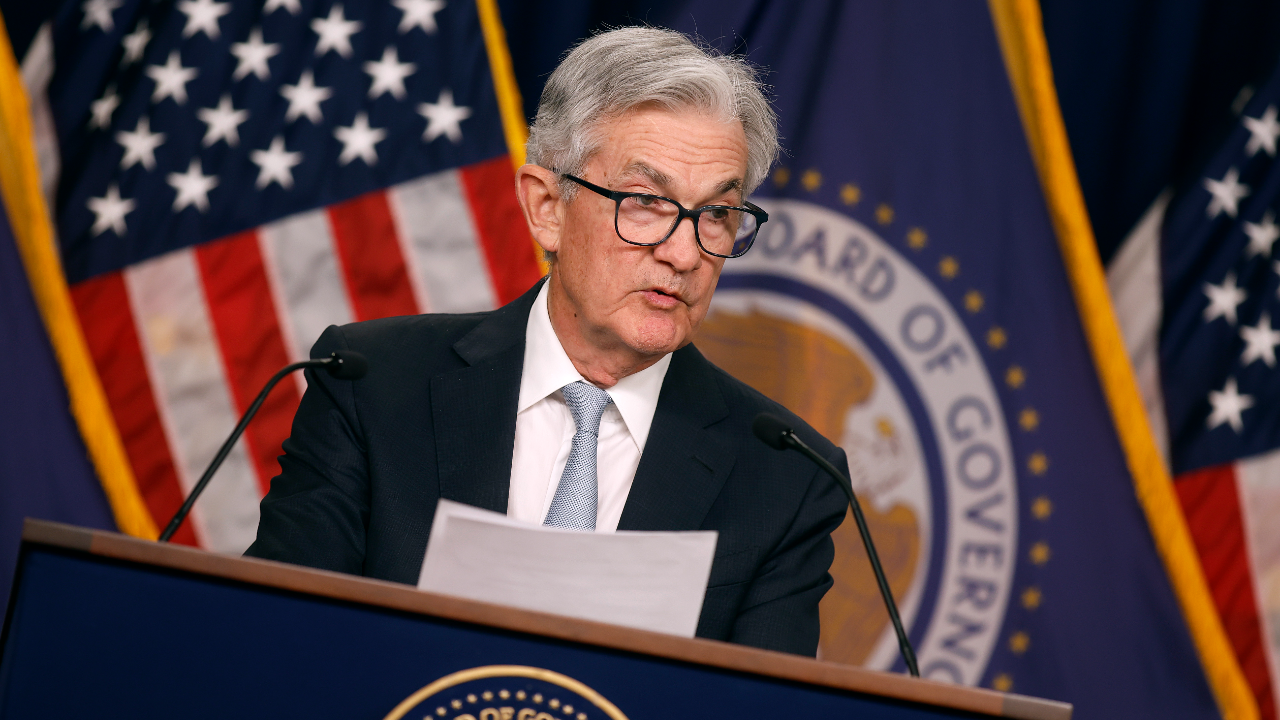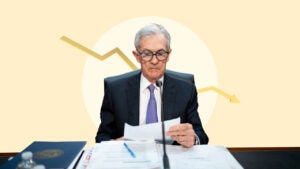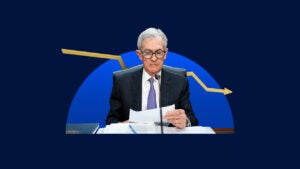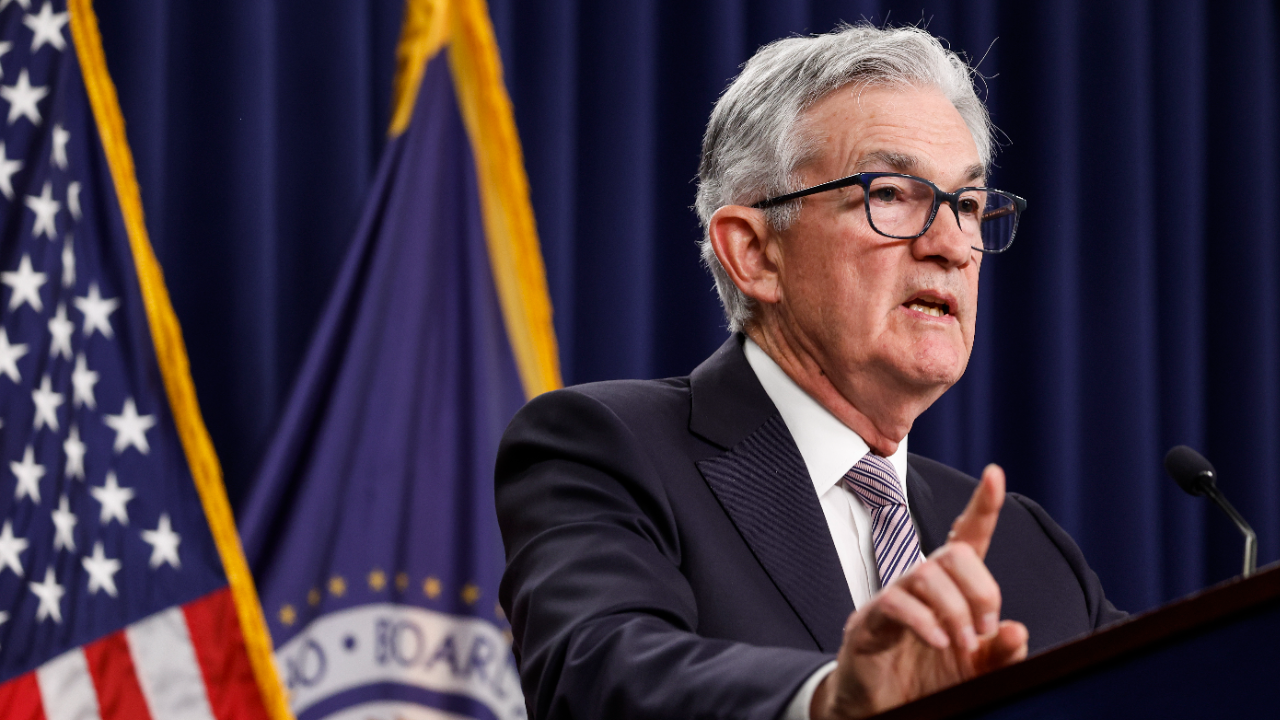Fed lifts interest rates another quarter point despite major bank distress

The Federal Reserve on Wednesday lifted interest rates by a quarter of a percentage point, staying focused on inflation and tuning out fears that higher borrowing costs may perpetuate turbulence for more banks.
Policymakers on the Federal Open Market Committee (FOMC) elected to raise their key benchmark interest rate to a new target range of 4.75-5 percent, the highest in more than a decade. The move is bound to keep lifting interest rates on deposits at banks while also nudging up borrowing costs on key consumer loans, such as home equity lines of credit (HELOCs) and credit cards.
The decision was unusually difficult to predict. Up until two weeks ago, Fed Chair Jerome Powell had cautioned Fed watchers that the U.S. central bank was willing to speed up how much it is hiking interest rates for the third time this tightening cycle. A key inflation report showed prices weren’t slowing as fast as they were previously, while costs outside of the volatile food and energy categories were instead heating up.
Then Silicon Valley Bank and Signature Bank collapsed. Both banks failed for reasons unlike the 2008 financial crisis, likely related to their undiversified depositor base that had a substantial amount of uninsured funds. Yet, it did lead to more bets that the Fed would either be willing to hike by the smaller quarter-point amount — if not hit the pause button altogether — given the financial instability both bank failures sparked.
U.S. central bankers acknowledged the negative effects a banking crisis could have on the economy and struck a mention in its post-meeting statement that “ongoing increases” will be appropriate to nix inflation. The median forecast among officials, however, showed just one more rate hike for 2023, despite projections for hotter inflation and a lower unemployment rate.
“Recent developments are likely to result in tighter credit conditions for households and businesses and to weigh on economic activity, hiring, and inflation,” Fed officials wrote in the statement. “The extent of these effects is uncertain.”
The Fed’s rapid rate hikes last year likely contributed to part of the mess, while concerns are also growing that the U.S. central bank failed in its duties as the most important overseer over U.S. banks. Monetary policy can take more than a year to filter through the financial system. The ultimate concern is that more could keep going wrong, as the U.S. financial system starts to catch up to the massive rate hikes the Fed approved last year.
“Not even the second and third largest bank failures in U.S. history, or the resulting instability in U.S. and global banking, can keep the Fed from a ninth consecutive interest rate hike to corral inflation,” says Greg McBride, CFA, Bankrate chief financial analyst. “If the financial system remains stable, this likely isn’t the last rate hike. Only one Fed participant sees rates holding here.”
The Fed’s rate hike: What it means for you
Savers
Americans keeping any amount of cash stashed away in a savings account have felt like they finally have something to celebrate. Banks have been steadily lifting interest rates on deposits as the Fed lifts rates to cool inflation, leading to increased payouts.
The 14 banks ranked for Bankrate’s best high-yield savings accounts in July 2021 were offering an average yield of 0.51 percent. As of March 15, the 12 banks ranked for March 2023 are now offering an average yield of 3.89 percent, the highest in more than a decade. Returns on savings accounts and CDs are at a 15-year high, Bankrate data shows.
“It is as important as ever for savers and borrowers to shop around to get the benefit, or minimize the impact, of rising interest rates,” McBride says.
Silicon Valley Bank’s failure, however, quickly came to crash the party. Concerns about whether depositors’ money is safe were amplified even more when a second bank — New York-based Signature Bank — failed about 48 hours later. The ultimate concern now is whether more financial monsters are lurking around the corner.
The bottom line is, your cash can be considered safe if you keep it in an FDIC-insured account and hold your funds within the standard $250,000 threshold per depositor, per FDIC-insured bank, per ownership category. Regulators are also looking into backstopping all U.S. deposits and temporarily scrapping the FDIC insurance limit if more banks were to fail.
For savers, the crisis has highlighted that liquidity and safety always trump yield-chasing, though that doesn’t mean you should keep settling for a rock-bottom yield at a traditional brick-and-mortar bank.
Investors
Financial conditions have been tightening substantially since SVB and Signature Bank collapsed, and investors have been on a bumpy ride.
In Wednesday trading leading up to the announcement, bank stocks have tumbled more than 20 percent since March 8, according to the KBW Nasdaq Bank Index. Regional stocks were taking some of the biggest hits, with shares of embattled PacWest and First Republic falling a respective 56 percent and 86 percent over the same period.
PacWest said in a Wednesday report that 20 percent of cash deposits had been withdrawn since the start of the year, though the bank had raised billions of dollars in funds from both an emergency Fed lending facility for banks and an investment firm. Markets more broadly, however, have been looking past the banking sector turmoil and are on the upswing, with the S&P 500 recovering all of the losses from SVB’s collapse.
Higher rates could pose more challenges for banks and the economy, and investors may be even more skittish. But investors should tune out the news and avoid making knee-jerk reactions based on the news of the day. If you’re investing for long-term goals such as retirement and maintain a diversified portfolio of investments, you can afford to weather the storm.
Mortgages
Investors have been pouring into traditional safe-haven assets as banks remain distressed. The 2-year Treasury yield on March 13 fell the most in a single day since 1987, while the 10-year Treasury yield has tumbled to the lowest level since September.
The average rate on a 30-year fixed mortgage charted a similar descent, hitting 6.66 percent on March 15, according to Bankrate data. Last fall, the rate had soared to a 20-year high of 7.12 percent.
Mortgage rates could continue breaking away from the Fed if investors see recession risks and more banking troubles. Bankrate’s rate forecast for 2023 pencils in a rate of 5.25 percent by the end of the year, suggesting the key home-financing loan could drop even more throughout the year. Yet, the record-low rates and cheap deals found during the coronavirus pandemic and even in the decade after the financial crisis are unlikely to return anytime soon.
If inflation keeps cooling and higher rates weigh on demand, prospective homebuyers could still feel some relief. Pockets of improvement are starting to show in a housing market that’s been red-hot since the Fed slashed rates to near-zero in March 2020. Existing-home sale prices fell in February for the first time in 11 years, according to data from the National Association of Realtors. Home price growth slowed for the sixth consecutive month in S&P CoreLogic’s Case-Shiller Home Index.
Borrowers
Every time the Fed hikes rates, borrowing costs get even more expensive. The national average credit card annual percentage rate (APR) notched a new record high of 20.04 percent on March 8, according to Bankrate data. Meanwhile, home equity lines of credit have touched 15-year highs, while car loans have jumped to 12-year highs, according to Greg McBride, CFA, Bankrate chief financial analyst.
Borrowers who have variable-rate, high-interest debt are in an even more precarious position every time the Fed raises rates.
Consumers can save hundreds, if not thousands, of dollars by eliminating their credit card debt. Determine whether the price of transferring your debt to a balance-transfer card with a 0 percent APR introductory offer — a process that usually comes with a fixed fee — could save you more money over time. If you have variable-rate debt, meanwhile, consider refinancing into a fixed-rate loan to limit your fragility to higher rates.
Caught between a banking crisis and an inflation crisis, the Fed forges ahead
Powell reiterated that the Fed is still taking a hard stance against the hottest price pressures in 40 years. The latest decision shows officials aren’t deterred from that fight despite the two recent bank failures.
“We are committed to restoring price stability, and all of the evidence says that the public has confidence that we will do so,” Powell said. “It is important that we sustain that confidence with our actions as well as our words.”
Fed officials have been playing a game of catch-up on price pressures since March 2022, when the Fed raised rates for the first time since 2018. Critics, however, have said the move was too little, too late, adding that the Fed’s failure to spot inflation before it took off on the runway could have contributed to the financial instability.
Price pressures first hit a 40-year high in November 2021, almost five months before the Fed’s first rate hike. It forced Powell & Co. to take a bold approach: Raising interest rates meeting after meeting, and in increments that haven’t been seen for decades.
“The Fed has sown a credibility issue on inflation,” McBride says. “The way to dispel that is to see the job of restoring price stability through.”
Yet, the Fed’s updated projections defy Powell’s suggestion earlier this month that rates will likely need to rise even higher than previously predicted. The Fed’s median forecast for where interest rates will peak didn’t change from its last update in December, with the majority of Fed officials still penciling in a so-called “terminal rate” target range of 5-5.25 percent.
That might have more to do with the two recent bank failures than a slowdown in price increases. Powell stressed the banking system is “safe” and “resilient” while also acknowledging that some financial firms could slow lending to maintain more liquid balance sheets — doing some of the Fed’s work for it. Slower lending, however, means slower spending, which could also cool inflation.
Officials upgraded their forecasts for inflation to 3.3 percent for the year ahead and lowered their forecast for joblessness to 4.5 percent.
The Fed’s projections also showed its planning to keep interest rates at that higher level for even longer. Officials moved up their estimate for the fed funds rate in 2024 to 4.25-4.5 percent, 25 basis points higher than the previous update from December.
It signals how the Fed plans to combat inflation while also being wary of what’s happening with banks. Rates may not rise as high, but the Fed will hold those borrowing costs at a higher level for longer — and possibly cut them even later.
“The Fed isn’t too concerned yet that they’re driving at night without headlights,” says Steve Rick, chief economist at CUNA Mutual Group. “There is a massive amount of monetary restraint imposed on the economy. They could start to really slow things down, or start to pause and wait out the long and variable lags of monetary policy.”
Powell said the Fed doesn’t expect to cut interest rates this year. Investors, however, see a different rate path shaking out for the central bank. Despite Powell’s pushback, market participants are betting on rate cuts as soon as the Fed’s July meeting, which could culminate in taking borrowing costs back to a target range of 4-4.25 percent by the end of the year, according to CME Group’s FedWatch.
Since both banks failed, fears have been growing that other banks could face problems the higher the Fed takes rates. A March 15 Fed report showed banks borrowed a record $152.8 billion from the Fed’s discount window amid the turmoil, while financial institutions also borrowed $11.9 billion from a new emergency loan program the Fed created in the wake of Silicon Valley Bank’s collapse.
In a post-meeting press conference with reporters, Powell underscored just how uncertain the outlook remains and said U.S. central bankers would raise interest rates even higher if inflation proves to be more resilient.
“Tighter credit conditions do translate into equivalent rate hikes,” says Jeffrey Roach, chief economist for LPL Financial. “Investors’ wishes may come true: Contagion risks are low enough for the Fed to hike rates, and inflation pressures are soft enough for the Fed to be near the end of the rate hiking campaign.”






